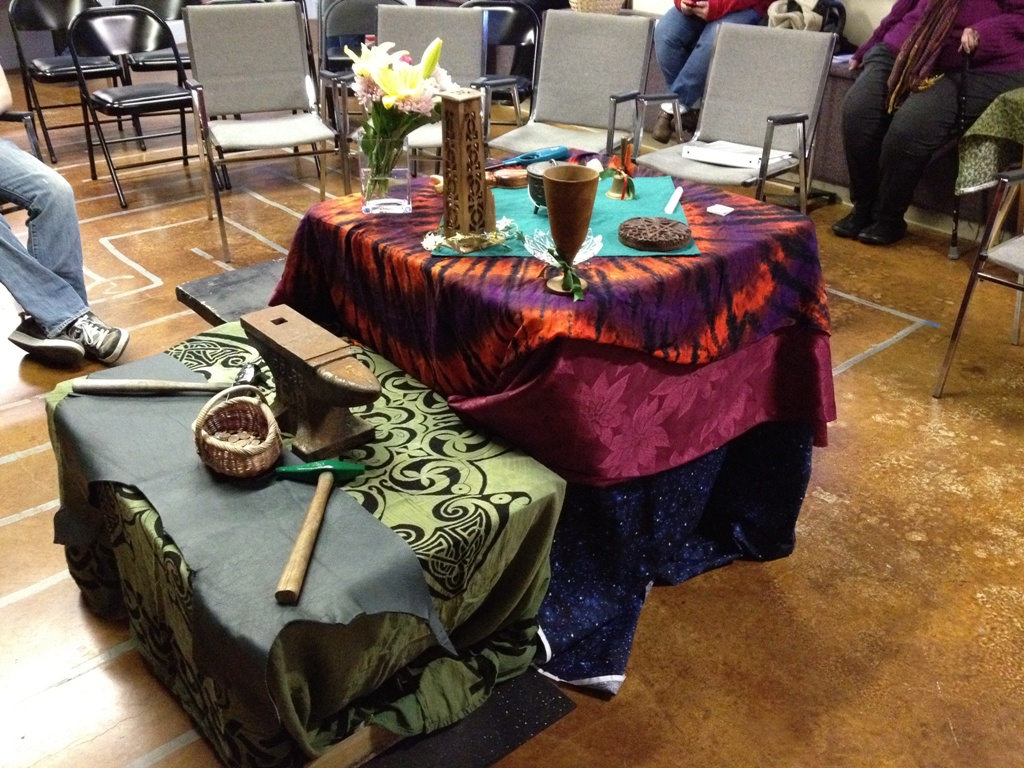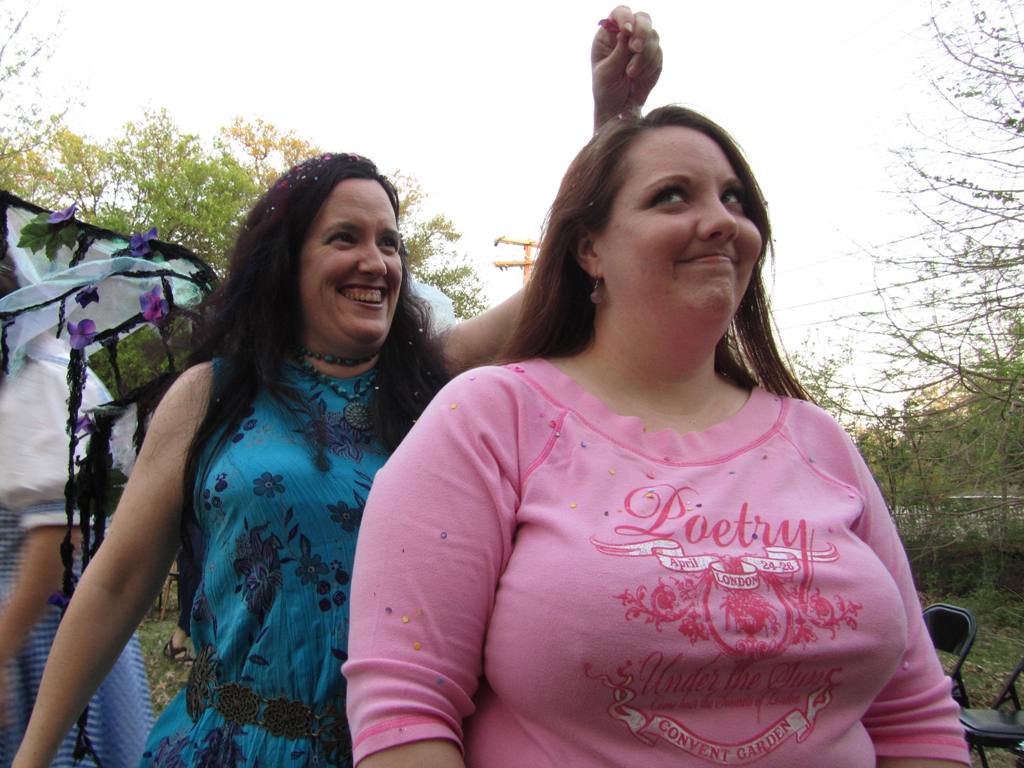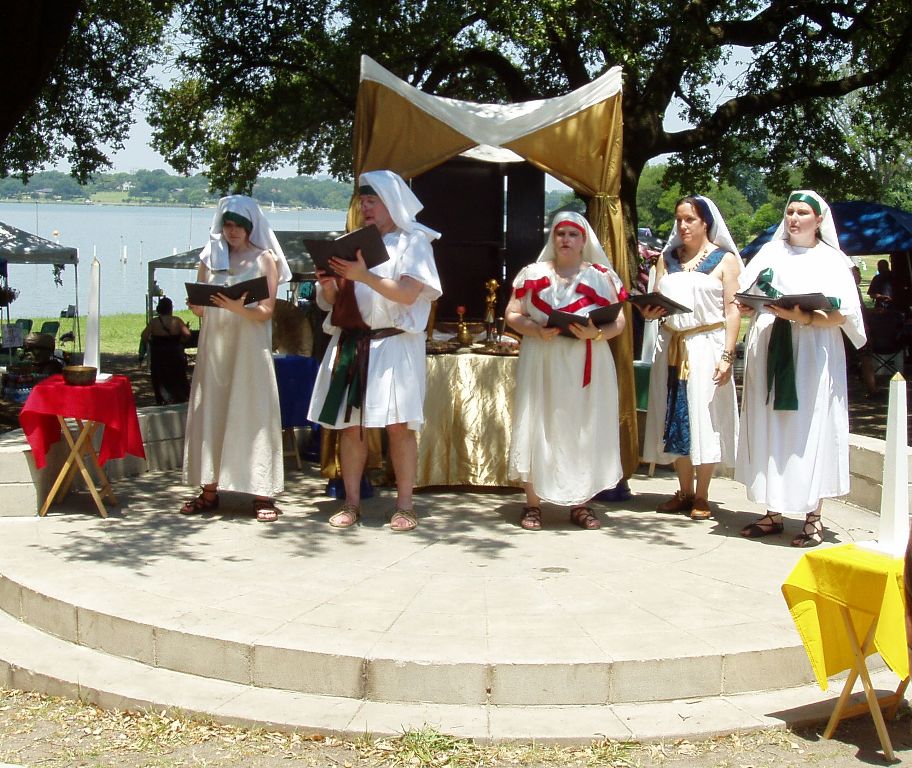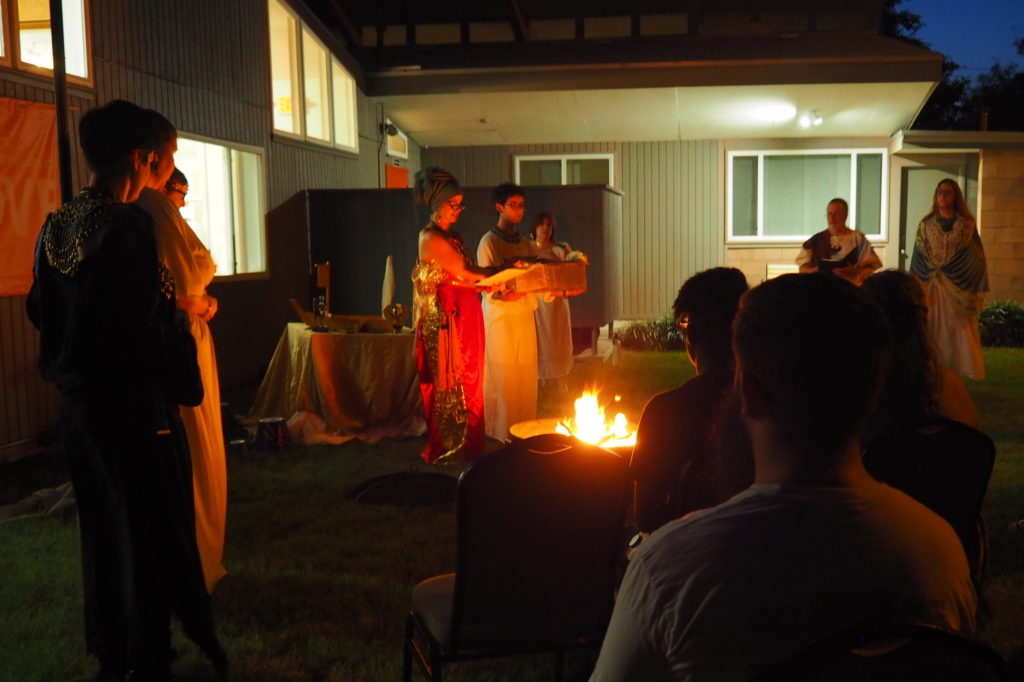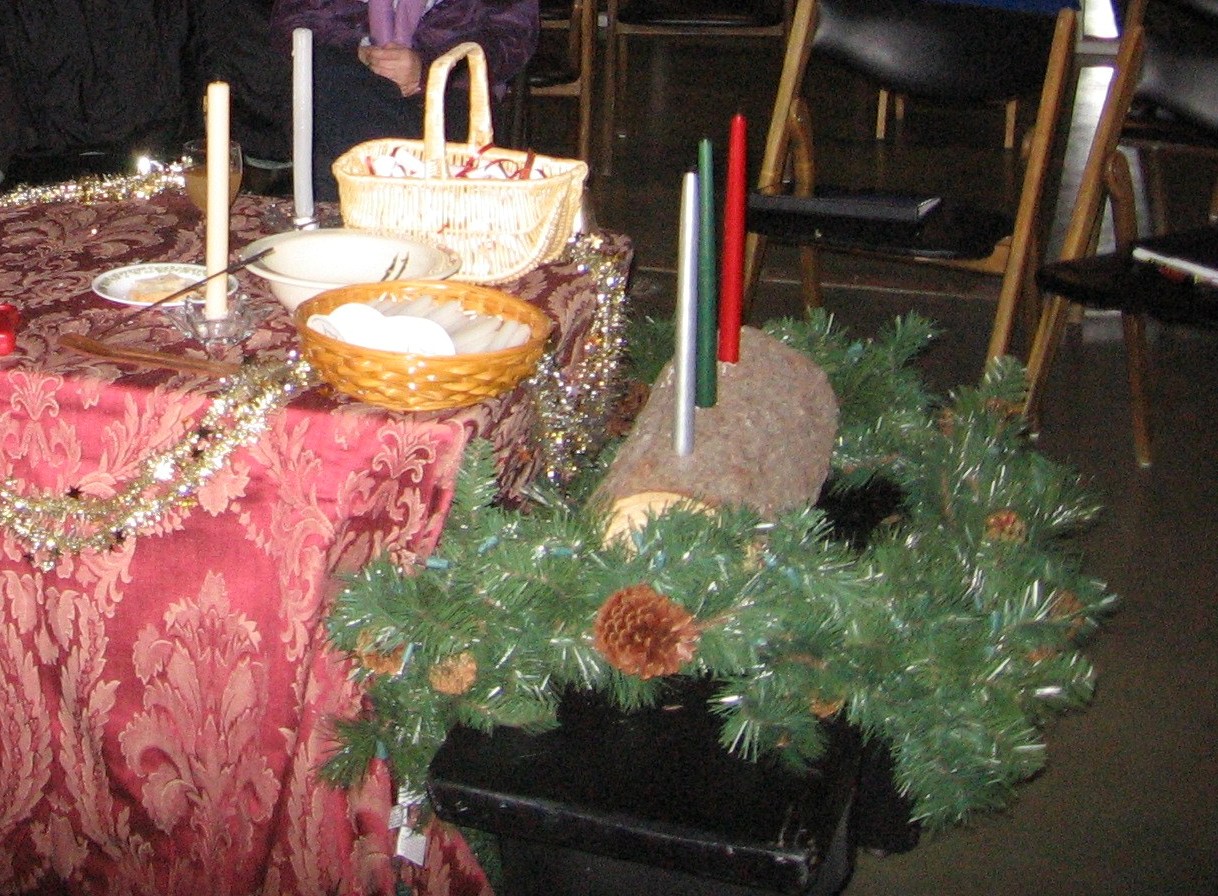While we have no formal traditions in the religious sense of the term, over the past thirteen years we’ve developed some informal traditions in the common sense of the term – things we do over and over again because they’ve become meaningful to us. Here’s a brief explanation of the eight major Pagan holidays and how we’ve celebrated them in the past.
Imbolc (February 1). Though this is the coldest time of the year, Imbolc is the first Spring festival, celebrating the promise of Spring. It is associated with the Celtic Goddess Brighid and the Christian St. Brigid. Our Imbolc celebrations frequently honor her, such as this ritual which featured a visit to Brighid’s Forge.
Ostara – the Spring Equinox (≈ March 20). By now days and nights are equal length and Winter is usually past – though one year it snowed at our Celebration of Spring! At Ostara we celebrate the rebirth of Nature and the planting we will do in our lives. And sometimes, as with this Chocolate Ritual, we simply have fun.
Beltane (May 1). Beltane is the third and final Spring festival and the traditional beginning of Summer. Here we celebrate fertility in all its forms, including fertility of the mind and fertility of the spirit. Since 2005, each Beltane has included a Maypole Dance.
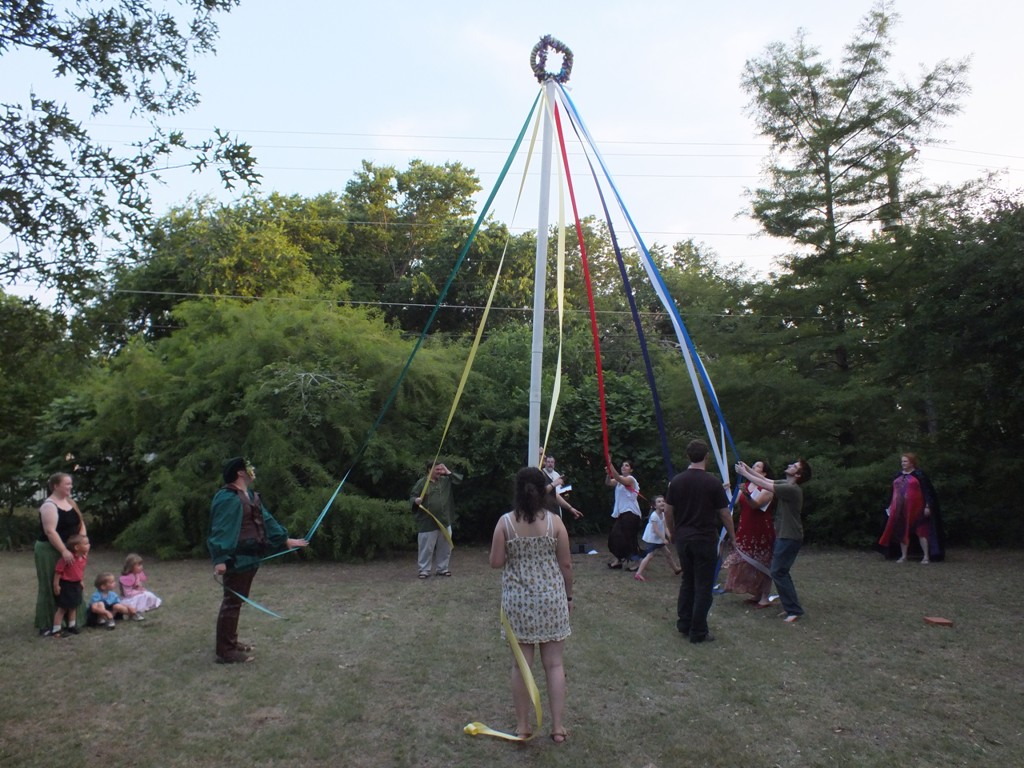 Summer Solstice (≈ June 21). At Summer Solstice we celebrate the Sun at its height. Since 2004, each Summer Solstice we have departed from our usual Celtic / Druid / Wiccan themes and conducted an Egyptian Temple Ritual. This is our attempt to recreate the daily rituals of ancient Egypt and to adapt them to our time and place. In 2009 we did this for the opening ritual of the EarthRhythms Summer Solstice Celebration at White Rock Lake in Dallas.
Summer Solstice (≈ June 21). At Summer Solstice we celebrate the Sun at its height. Since 2004, each Summer Solstice we have departed from our usual Celtic / Druid / Wiccan themes and conducted an Egyptian Temple Ritual. This is our attempt to recreate the daily rituals of ancient Egypt and to adapt them to our time and place. In 2009 we did this for the opening ritual of the EarthRhythms Summer Solstice Celebration at White Rock Lake in Dallas.
Lughnasadh (August 1). Lughnasadh is named for the Celtic god Lugh but was established in ancient times in honor of his foster mother Tailtiu. It is the first of three harvest festivals and celebrates the harvest of the grain. Our most frequent celebration has included a Harvest Feast and Bardic Offerings in thanksgiving for the bounty of the Earth which sustains our lives.
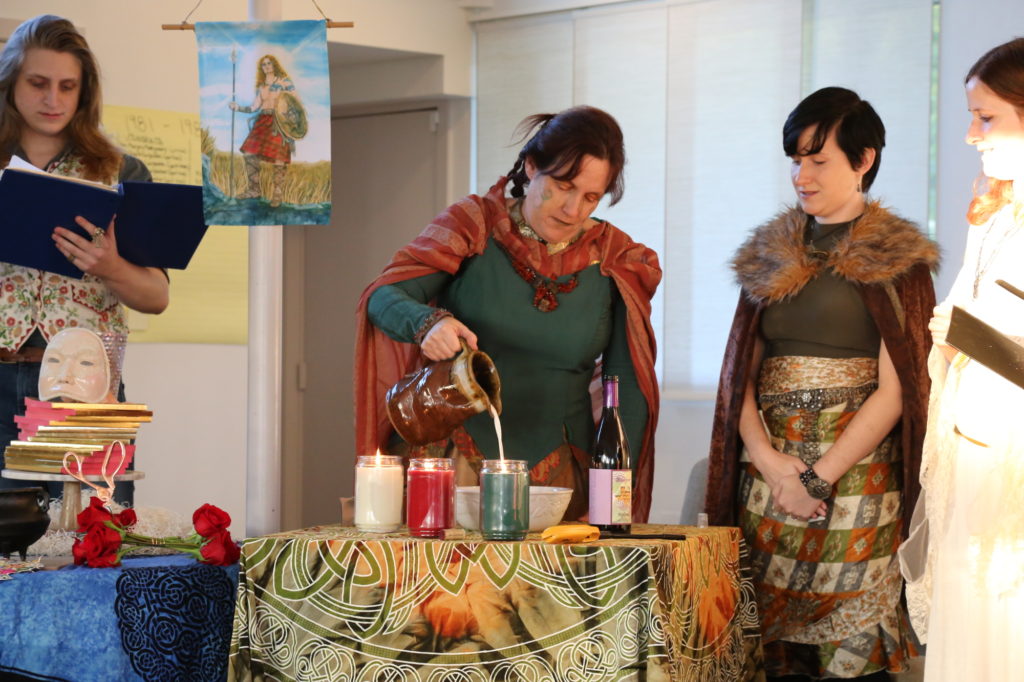 Mabon – the Fall Equinox (≈ September 23). Mabon celebrates the apple harvest and marks the shift from the light half to the dark half – now the nights will be longer than the days. We have no fixed traditions around Mabon. In recent years we’ve celebrated both Norse and Egyptian rituals at this time.
Mabon – the Fall Equinox (≈ September 23). Mabon celebrates the apple harvest and marks the shift from the light half to the dark half – now the nights will be longer than the days. We have no fixed traditions around Mabon. In recent years we’ve celebrated both Norse and Egyptian rituals at this time.
Samhain (October 31). Samhain (pronounced “SOW-en”) is the final harvest festival of the year and the time when the veil between this world and the Otherworld thins. It is the time to honor our ancestors, to commune with our beloved dead, and to let go of what was once meaningful to us but which no longer serves our highest purpose.
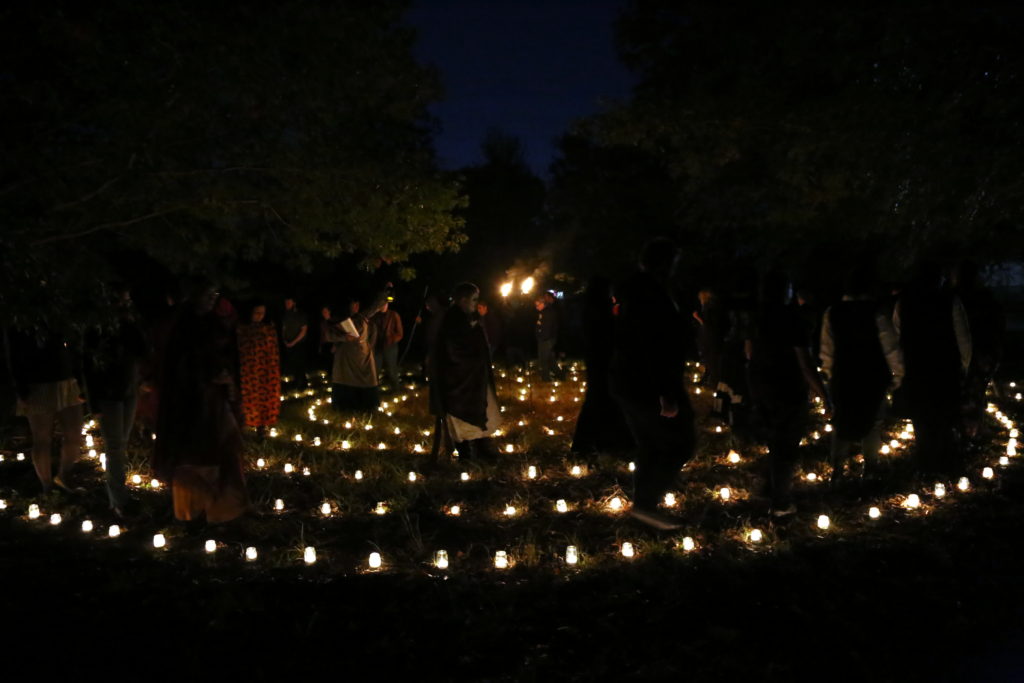 Yule – the Winter Solstice (≈ December 21). This is the shortest day and the longest night, the time when we celebrate the rebirth of the Sun. Our Winter Solstice observances take many forms, including a festive lighting of the Yule Log and sealing our intentions for the new year.
Yule – the Winter Solstice (≈ December 21). This is the shortest day and the longest night, the time when we celebrate the rebirth of the Sun. Our Winter Solstice observances take many forms, including a festive lighting of the Yule Log and sealing our intentions for the new year.

